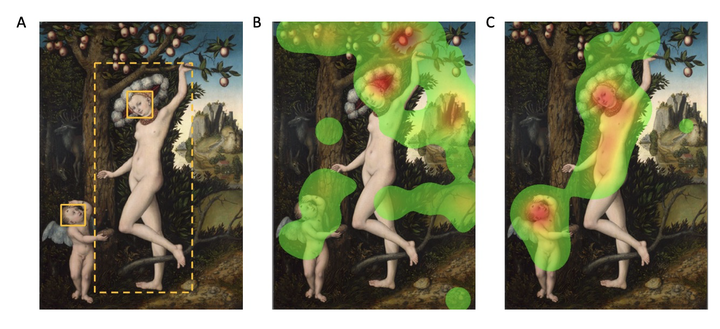 Image credit: Bridgeman Images
Image credit: Bridgeman ImagesAbstract
British and Chinese participants viewed a set of Western representational paintings (henceforth paintings) for later identification in a yes/no discrimination task. Eye movements were recorded while participants viewed the paintings with each painting split into face, theme of the painting and its context regions of interest (ROIs). British participants performed the discrimination task more accurately than Chinese participants. Eye movement data were first analyzed to confirm reliable individual differences in the proportion of fixations made to ROIs, and second, for evidence of a cross-cultural influence in focus on ROIs over the time-course of viewing. The results confirmed that individual differences in the proportion of fixations made to ROIs were reliable across a subset of paintings for both British and Chinese. In the context of the present study, this finding was a precondition to explore the time-course of fixations across ROIs. With respect to the time-course of fixations across ROIs, Chinese participants focused more on the theme, and less on faces (and vice-versa for British participants), in a period starting around 2 s after the onset of viewing. Earlier in viewing there was evidence that Chinese participants had an increased focus on the context. The results (a) extend the findings reported by Trawiński, Zang, et al. (2021) on the impact of the Other Race Effect on the viewing of paintings; (b) show the time course associated with a more general cross-cultural influence on scene perception (Masuda & Nisbett, 2001). (PsycInfo Database Record (c) 2023 APA, all rights reserved)